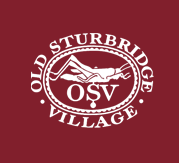Posted by kavery508 | Posted in Uncategorized | Posted on October 10, 2017
 Our Field Trip to Old Sturbridge Village (OSV) is upon us! We leave Friday at 9:00. Please send in lunch with your child, in a completely disposable container (e.g. no metal silverware or Tupperware that you want returned). We will return at the end of the school day and eat snack then, so you can send that as usual. Also please dress your child comfortably in layers. In case of rain, raincoats=yes/ umbrellas=no. <“) If you drop your child off at school in the morning, please plan so that your child is here by 8:45. Thanks for helping with these details–it will help our day run smoothly so we can focus on the fun learning to be had there!
Our Field Trip to Old Sturbridge Village (OSV) is upon us! We leave Friday at 9:00. Please send in lunch with your child, in a completely disposable container (e.g. no metal silverware or Tupperware that you want returned). We will return at the end of the school day and eat snack then, so you can send that as usual. Also please dress your child comfortably in layers. In case of rain, raincoats=yes/ umbrellas=no. <“) If you drop your child off at school in the morning, please plan so that your child is here by 8:45. Thanks for helping with these details–it will help our day run smoothly so we can focus on the fun learning to be had there!
In particular, we’ll be observing and analyzing economics from a historical perspective. We’ll be learning in class what goods are, and to distinguish between want and needs, also the difference between goods and services, and where to find them in our community. We’ll bring this to bear during our walk through OSV, and introduce students to the importance of consumers and producers for the economy of a community. Students will then “produce” a “good” from long ago (toy; art; cookie) in activities led by OSV’s education staff. Try taking a virtual tour at home by using their interactive map with your child: https://www.osv.org/village-map
*Please note: Because of our trip, we will take our math facts quiz on Thursday this week. Homework is still due on Friday, both math and reading:
 Reading The goal of reading at home is to instill a lifelong habit of reading for fun and for informative purposes outside of school or work. In addition, our young readers can benefit from practicing the reading skills and comprehension strategies taught at school. The amount of time spent on reading homework will vary depending on both the level and the length of the books. Students at levels below 18 may spend less than 20 minutes reading, while those at 20 and above may spend at least that long. Feel free to supplement books from school with books from home.
Reading The goal of reading at home is to instill a lifelong habit of reading for fun and for informative purposes outside of school or work. In addition, our young readers can benefit from practicing the reading skills and comprehension strategies taught at school. The amount of time spent on reading homework will vary depending on both the level and the length of the books. Students at levels below 18 may spend less than 20 minutes reading, while those at 20 and above may spend at least that long. Feel free to supplement books from school with books from home.
In any case, students will bring home one or more books, Monday-Thursday. Their job is to read; fill in the reading log each night (sent home each Monday); return the book(s) when done; and bring other books home. On the last day of the week, parents sign the bottom of the log and the student returns it for credit.
Some notes:
- The log will come home each week in paper form. If your child loses the log, you can print a copy using the link under Parent Resources above. If that’s not an option for you, have your child write the books on any piece of paper, and sign it Thursday night.
- It’s important that students read and record the book each night. One night of reading for 1 hour per week doesn’t help them meet the goal above. Please check that they’re following the expectation until they’re independent with this routine.
- Although you don’t need to listen to him/her read, it’s a great idea to check in with your child by asking them to answer comprehension questions about what they’ve read (see Curriculum Night packet).
- Students reading chapter books needn’t finish them in one night (think The Magic Treehouse series). Instead, they should write down chapters or pages read in 20 minutes. One chapter book may provide several night’s reading (which is authentically how adults read!).
- If your child forgets or misplaces a reading book, simply have him/her read something from home or using online resources such as National Geographic for Kids.
Field Trip Resources The OSV website is fun and informative! Their videos page has some great starting points to explore economics at home with kids. Check out this example from the Tinsmith. What is the service he does for the community? What goods are produced there? Are they wants or needs? Where do we buy similar goods today?

